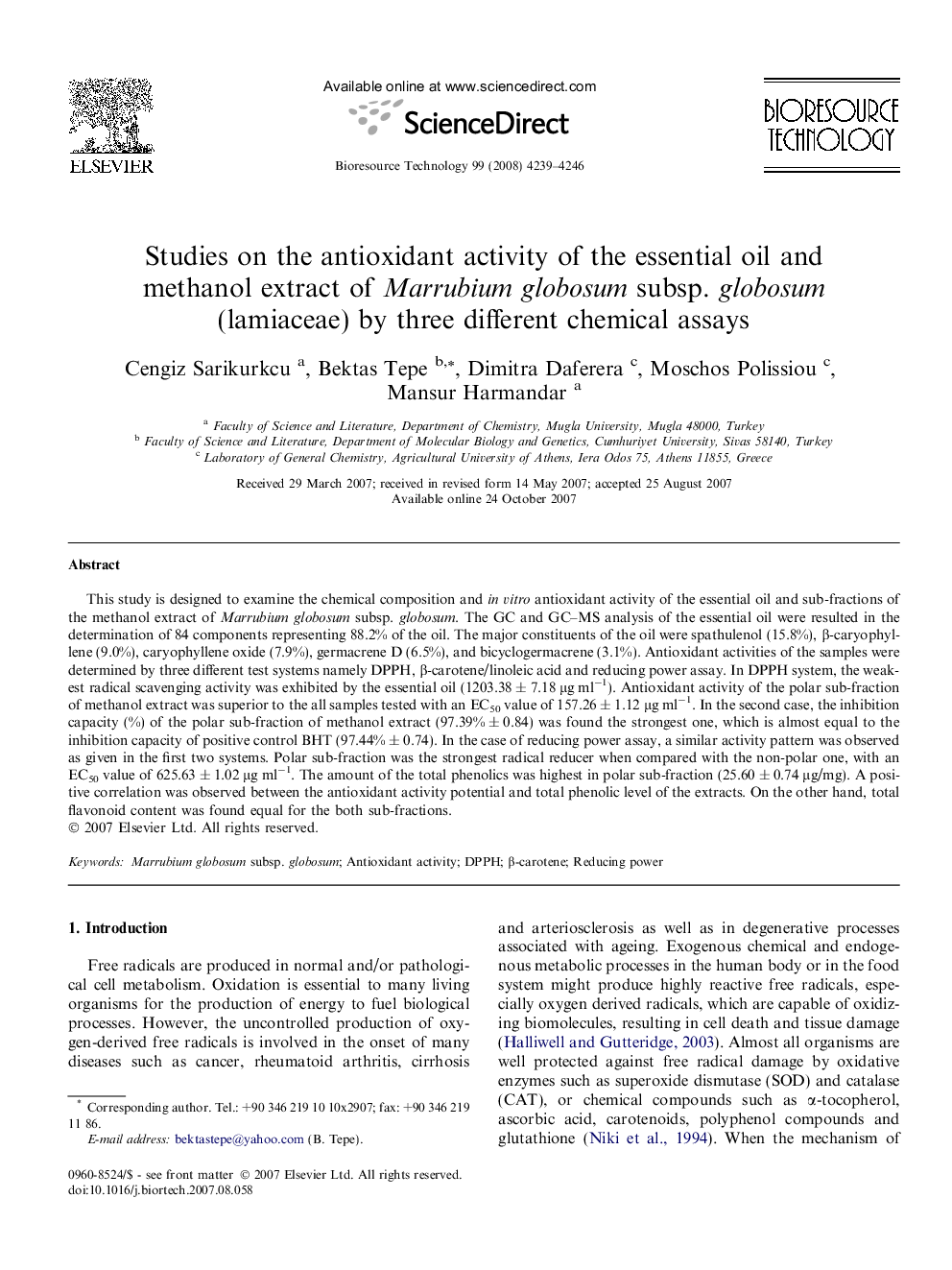| Article ID | Journal | Published Year | Pages | File Type |
|---|---|---|---|---|
| 684368 | Bioresource Technology | 2008 | 8 Pages |
This study is designed to examine the chemical composition and in vitro antioxidant activity of the essential oil and sub-fractions of the methanol extract of Marrubium globosum subsp. globosum. The GC and GC–MS analysis of the essential oil were resulted in the determination of 84 components representing 88.2% of the oil. The major constituents of the oil were spathulenol (15.8%), β-caryophyllene (9.0%), caryophyllene oxide (7.9%), germacrene D (6.5%), and bicyclogermacrene (3.1%). Antioxidant activities of the samples were determined by three different test systems namely DPPH, β-carotene/linoleic acid and reducing power assay. In DPPH system, the weakest radical scavenging activity was exhibited by the essential oil (1203.38 ± 7.18 μg ml−1). Antioxidant activity of the polar sub-fraction of methanol extract was superior to the all samples tested with an EC50 value of 157.26 ± 1.12 μg ml−1. In the second case, the inhibition capacity (%) of the polar sub-fraction of methanol extract (97.39% ± 0.84) was found the strongest one, which is almost equal to the inhibition capacity of positive control BHT (97.44% ± 0.74). In the case of reducing power assay, a similar activity pattern was observed as given in the first two systems. Polar sub-fraction was the strongest radical reducer when compared with the non-polar one, with an EC50 value of 625.63 ± 1.02 μg ml−1. The amount of the total phenolics was highest in polar sub-fraction (25.60 ± 0.74 μg/mg). A positive correlation was observed between the antioxidant activity potential and total phenolic level of the extracts. On the other hand, total flavonoid content was found equal for the both sub-fractions.
